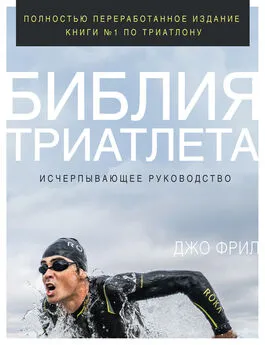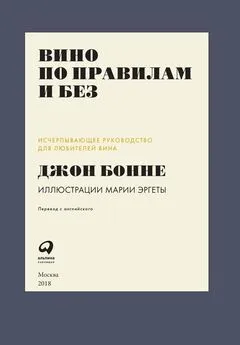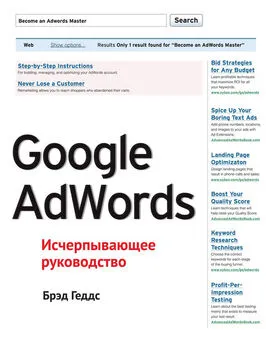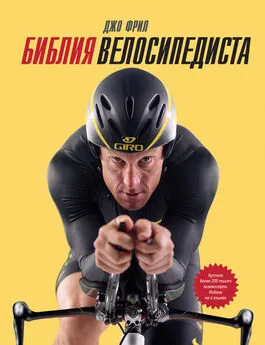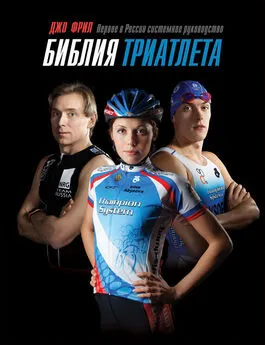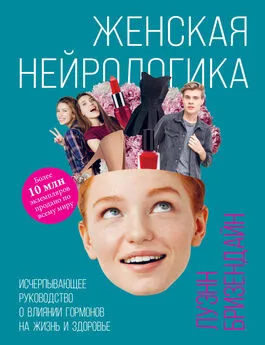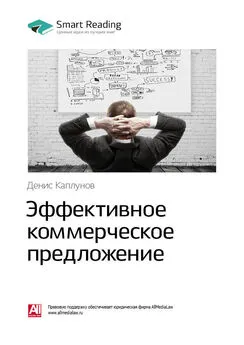Джо Фрил - Библия триатлета. Исчерпывающее руководство
- Название:Библия триатлета. Исчерпывающее руководство
- Автор:
- Жанр:
- Издательство:Литагент МИФ без БК
- Год:2018
- Город:Москва
- ISBN:978-5-00117-314-4
- Рейтинг:
- Избранное:Добавить в избранное
-
Отзывы:
-
Ваша оценка:
Джо Фрил - Библия триатлета. Исчерпывающее руководство краткое содержание
Книга обязательна к прочтению для триатлетов-любителей и профессионалов, а также тренеров по триатлону.
Библия триатлета. Исчерпывающее руководство - читать онлайн бесплатно ознакомительный отрывок
Интервал:
Закладка:
Penev, P. D. “Association Between Sleep and Morning Testosterone Levels in Older Men”. Sleep (2007) 30 (4): 427–432.
Pennings, B., R. Koopman, M. Beelen, J. M. G. Senden, W. H. M. Saris, and L. J. C. van Loon. “Exercising Before Protein Intake Allows for Greater Use of Dietary Protein-Derived Amino Acids for De Novo Muscle Protein Synthesis in Both Young and Elderly Men”. American Journal of Clinical Nutrition (2011) 93 (2): 322–331.
Perez-Schindler, J., D. L. Hamilton, D. R. Moore, K. Baar, and A. Philp. “Nutritional Strategies to Support Concurrent Training”. European Journal of Sport Science (2015) 15 (1): 41–52.
Phillips, S. M. “A Brief Review of Critical Processes in Exercise-Induced Muscular Hypertrophy”. Sports Medicine (2014) 44 (S1): S71–S77.
Pigeon, W. R., M. Carr, C. Gorman, and M. L. Perlis. “Effects of a Tart Cherry Juice Beverage on the Sleep of Older Adults with Insomnia: A Pilot Study”. Journal of Medicine and Food (2010) 13 (3): 579–583.
Res, P. T., B. Groen, B. Pennings, M. Beelen, G. A. Wallis, A. P. Gijsen, J. M. Senden, and L. J. Van Loon. “Protein Ingestion Before Sleep Improves Postexercise Overnight Recovery”. Medicine and Science in Sports and Exercise (2012) 44 (8): 1560–1569.
Reynolds, A. C., J. Dorrian, P. Y. Liu, H. P. VanDongen, G. A. Wittert, L. J. Harmer, and S. Banks. “Impact of Five Nights of Sleep Restriction on Glucose Metabolism, Leptin and Testosterone in Young Adult Men”. PLoS One (2012) 7 (7): e41218.
Riman, D., L. Messonier, J. Castells, X. Devillard, and P. Calmels. “Effects of Compression Stockings During Exercise and Recovery on Blood Lactate Kinetics”. European Journal of Applied Physiology (2010) 110 (2): 425–433.
Sands, W. A., J. R. McNeal, S. R. Murray, and M. H. Stone. “Dynamic Compression Enhances Pressure-to-Pain Threshold in Elite Athlete Recovery: Exploratory Study”. Journal of Strength and Conditioning Research (2015) 29 (5): 1263–1272.
Sawka, M. N., S. J. Montain, and W. A. Latzka. “Hydration Effects on Thermoregulation and Performance in the Heat”. Comparative Biochemistry and Physiology Part A, Molecular & Integrative Physiology (2001) 128 (4): 679–690.
Scanlon, A. T., B. J. Dascombe, P. R. Reaburn, and M. Osborne. “The Effects of Wearing Lower-Body Compression Garments During Endurance Cycling”. International Journal of Sports Physiology and Performance (2008) 3 (4): 424–438.
Seiler, S., O. Haugen, and E. Kufel. “Autonomic Recovery After Exercise in Trained Athletes: Intensity and Duration Effects”. Medicine and Science in Sports and Exercise (2007) 39 (8): 1366–1373.
Sperlich, B., M. Haegele, S. Achtzehn, J. Linville, H. C. Holmberg, and J. Mester. “Different Types of Compression Clothing Do Not Increase Submaximal and Maximal Endurance Performance in Well-Trained Athletes”. Journal of Sports Sciences (2010) 28 (6): 609–614.
Suzuki, M. “Glycemic Carbohydrates Consumed with Amino Acids or Protein Right After Exercise Enhance Muscle Formation”. Nutrition Review (2003) 61 (5 Pt 2): S88–S94.
Symons, T. B., M. S. Moore, and R. R. Wolfe. “A Moderate Serving of High-Quality Protein Maximally Stimulates Muscle Protein Synthesis in Young and Elderly Subjects”. Journal of the American Dietetic Association (2009) 109 (9): 1582–1586.
Tipton, K. D., A. A. Ferrando, S. M. Phillips, D. Doyle Jr, and R. R. Wolfe. “Postexercise Net Protein Synthesis in Human Muscle from Orally Administered Amino Acids”. American Journal of Physiology (1999) 276 (4 Pt 1): E628–E634.
Tomlin, D. L., and H. A. Wenger. “The Relationship Between Fitness and Recovery from High Intensity Intermittent Exercise”. Sports Medicine (2001) 31 (1): 1–11.
Tseng, C. Y., J. P. Lee, Y. S. Tsai, S. D. Lee, C. L. Kao, T. C. Liu, C. Lai, M. B. Harris, and C. H. Kuo. “Topical Cooling (Icing) Delays Recovery from Eccentric Exercise-Induced Muscle Damage”. Journal of Strength and Conditioning Research (2013) 27 (5): 1354–1361.
Tucker, T. J., D. R. Slivka, J. S. Cuddy, W. S. Hailes, and B. C. Ruby. “Effect of Local Cold Application on Glycogen Recovery”. Journal of Sports Medicine and Physical Fitness (2012) 52 (2): 158–164.
Vaile, J., S. Halson, N. Gill, and B. Dawson. “Effect of Hydrotherapy on Recovery from Fatigue”. International Journal of Sports Medicine (2008) 29 (7): 539–544.
Vaile, J., S. Halson, N. Gill, and B. Dawson. “Effect of Cold Water Immersion on Repeat Cycling Performance and Thermoregulation in the Heat”. Journal of Sports Sciences (2008) 26 (5): 431–440.
Valtin, H. “ ‘Drink at Least Eight Glasses of Water a Day.’ Really? Is here Scientific Evidence for ‘8 x 8’?” American Journal of Physiology. Regulatory, Integrative and Comparative Physiology (2002) 283 (5): R993–R1004.
Van Cauter, E., R. Leproult, and L. Plat. “Age-Related Changes in Slow-Wave Sleep and REM Sleep and Relationship with Growth Hormone and Cortisol Levels in Healthy Men”. Journal of the American Medical Association (2000) 284 (7): 861–868.
VanHelder, T., and M. W. Radomski. “Sleep Deprivation and the Effect on Exercise Performance”. Sports Medicine (1989) 7 (4): 235–247.
Van Loon, L. J., M. Kruijshoop, H. Verhagen, W. H. Saris, and A. J. Wagenmakers. “Ingestion of Protein Hydrolysate and Amino Acid-Carbohydrate Mixtures Increases Postexercise Plasma Insulin Responses in Men”. Journal of Nutrition (2000) 130 (10): 2508–2513.
Versey, N. G., S. L. Halson, and B. T. Dawson. “Effect of Contrast Water Therapy Duration on Recovery of Running Performance”. International Journal of Sports Physiology and Performance (2012) 7 (2): 130–140.
Wiener, A., J. Mizrahi, and O. Verbitsky. “Enhancement of Tibialis Anterior Recovery by Intermittent Sequential Pneumatic Compression of the Legs”. Basic Applied Myology (2001) 11 (2): 87–90.
Wilcox, I., J. Cronin, and W. Hing. “Physiological Response to Water Immersion: A Method for Sport Recovery?” Sports Medicine (2006) 6 (9): 747–765.
Zelikovski, A., C. L. Kaye, G. Fink, S. A. Spitzer, and Y. Shapiro. “The Effects of the Modified Intermittent Sequential Pneumatic Device (MISPD) on Exercise Performance Following an Exhaustive Exercise Bout”. British Journal of Sports Medicine (1993) 27 (4): 255–259.
Ardigo, L. P., C. LaFortuna, A. E. Minetti, P. Mognoni, and F. Saibene. “Metabolic and Mechanical Aspects of Foot Landing Type, Forefoot and Rearfoot Strike, in Human Running”. Acta Physiologica Scandinavica (1995) 155 (1): 17–22.
Beneke, R., and M. Hutler. “The Effects of Training on Running Economy and Performance in Recreational Athletes”. Medicine and Science in Sports and Exercise (2005) 37 (10): 1794–1799.
Garside, I., and D. A. Doran. “Effects of Bicycle Frame Ergonomics on Triathlon 10-km Running Performance”. Journal of Sports Sciences (2000) 18 (10): 825–833.
Hasegawa, H., T. Yamauchi, and W. J. Kraemer. “Foot Strike Patterns of Runners at the 15-km Point During an Elite-Level Half Marathon”. Journal of Strength and Conditioning Research (2007) 21 (3): 888–893.
Lucia, A., J. Olivan, J. Bravo, M. Gonzalez-Freire, and C. Foster. “The Key to Top-Level Endurance Running Performance: A Unique Example”. British Journal of Sports Medicine (2008) 42 (3): 172–174.
Nummela, A., T. Keranen, and L. O. Mikkelsson. “Factors Related to Top Running Speed and Economy”. International Journal of Sports Medicine (2007) 28 (8): 655–661.
Paavolainen, L., A. Nummela, H. Rusko, and K. Hakkinen. “Neuromuscular Characteristics and Fatigue During 10-km Running”. International Journal of Sports Medicine (1999) 20 (8): 516–521.
Peeling, P., and G. Landers. “Swimming Intensity During Triathlon: A Review of Current Research and Strategies to Enhance Race Performance”. Journal of Sports Sciences (2009) 27 (10): 1079–1085.
Price, D., and B. Donne. “Effect of Variation in Seat Tube Angle at Different Seat Heights on Submaximal Cycling Performance in Man”. Journal of Sports Sciences (1997) 15: 395–402.
Saunders, P. U., D. B. Pyne, R. D. Telford, and J. A. Hawley. “Factors Affecting Running Economy in Trained Distance Runners”. Sports Medicine (2004) 34 (7): 465–485.
Steudel-Numbers, K. L., T. D. Weaver, and C. M. Wall-Scheler. “The Evolution of Human Running: Effects of Changes in Lower-Limb Length on Locomotor Economy”. Journal of Human Evolution (2007) 53 (2): 191–196.
Ahmad, C. S., A. M. Clark, N. Heilmann, J. S. Schoeb, T. R. Gardner, and W. N. Levine. “Effect of Gender and Maturity on Quadriceps-to-Hamstring Strength Ratio and Anterior Cruciate Ligament Laxity”. American Journal of Sports Medicine (2006) 34 (3): 370–374.
Aspenes, S. T., and T. Karlsen. “Exercise-Training Intervention Studies in Competitive-Swimming”. Sports Medicine (2012) 42 (6): 527–543.
Baar, K. “Using Molecular Biology to Maximize Concurrent Training”. Sports Medicine (2015) 44 (Supplement 2): S117–S125.
Barnes, K. R., W. G. Hopkins, M. R. McGuigan, M. E. Northuis, and A. E. Kilding. “Effects of Resistance Training on Running Economy and Cross-Country Performance”. Medicine and Science in Sports and Exercise (2013) 45 (12): 2322–2331.
Behm, D. G., D. Cappa, and G. A. Power. “Trunk Muscle Activation During Moderate and High-Intensity Running”. Applied Physiology, Nutrition, and Metabolism (2009) 34 (6): 1008–1016.
Behm, D. G., and D. G. Sale. “Intended Rather than Actual Movement Velocity Determines Velocity-Specific Training Response”. Journal of Applied Physiology (1993) 74 (1): 359–368.
Coombs R., and G. Garbutt. “Developments in the Use of the Hamstring/Quadriceps Ratio for the Assessment of Muscle Balance”. Journal of Sports Science and Medicine (2002) 1 (3): 56–62.
Cormie, P., M. R. McGuigan, and R. U. Newton. “Developing Maximal Neuromuscular Power: Part 1–Biological Basis of Maximal Power Production”. Sports Medicine (2011) 41 (1): 17–38.
Cormie, P., M. R. McGuigan, and R. U. Newton. “Developing Maximal Neuromuscular Power: Part 2–Training Considerations for Improving Maximal Power Production”. Sports Medicine (2011) 41 (2): 125–146.
Damasceno, M. V., A. E. Lima-Silva, L. A. Pasqua, V. Tricoli, M. Duarte, D. J. Bishop, and R. Bertuzzi. “Effects of Resistance Training on Neuromuscular Characteristics and Pacing During 10-km Running Time Trial”. European Journal of Applied Physiology (2015) 115 (7): 1513–1522.
Davies, T., R. Orr, M. Halaki, and D. Hackett. “Effect of Training Leading to Repetition Failure on Muscular Strength: A Systematic Review and Meta-Analysis”. Sports Medicine (2016) 46 (4): 487–502.
Ebben, W. P., M. L. Fauth, L. R. Garceau, and E. J. Petrushek. “Kinetic Quantification of Plyometric Exercise Intensity”. Journal of Strength and Conditioning Research (2011) 25 (12): 3288–3298.
Ebben, W. P., A. G. Kindler, K. A. Chirdon, N. C. Jenkins, A. J. Polichnowski, and A. V. Ng. “The Effect of High-Load vs. High-Repetition Training on Endurance Performance”. Journal of Strength and Conditioning Research (2004) 18 (3): 513–517.
Garrido, N., D. A. Marinho, V. M. Reis, R. van den Tillaar, A. M. Costa, A. J. Silva, and M. C. Marques. “Does Combined Dry Land Strength and Aerobic Training Inhibit Performance of Young Competitive Swimmers?” Journal of Sports Science and Medicine (2010) 9 (2): 300–310.
Girold, S., D. Maurin, B. Dugue, J. C. Chatard, and G. Millet. “Effects of Dry-Land vs. Resisted and Assisted-Sprint Exercises on Swimming Sprint Performances”. Journal of Strength and Conditioning Research (2007) 21 (2): 599–605.
Читать дальшеИнтервал:
Закладка:
